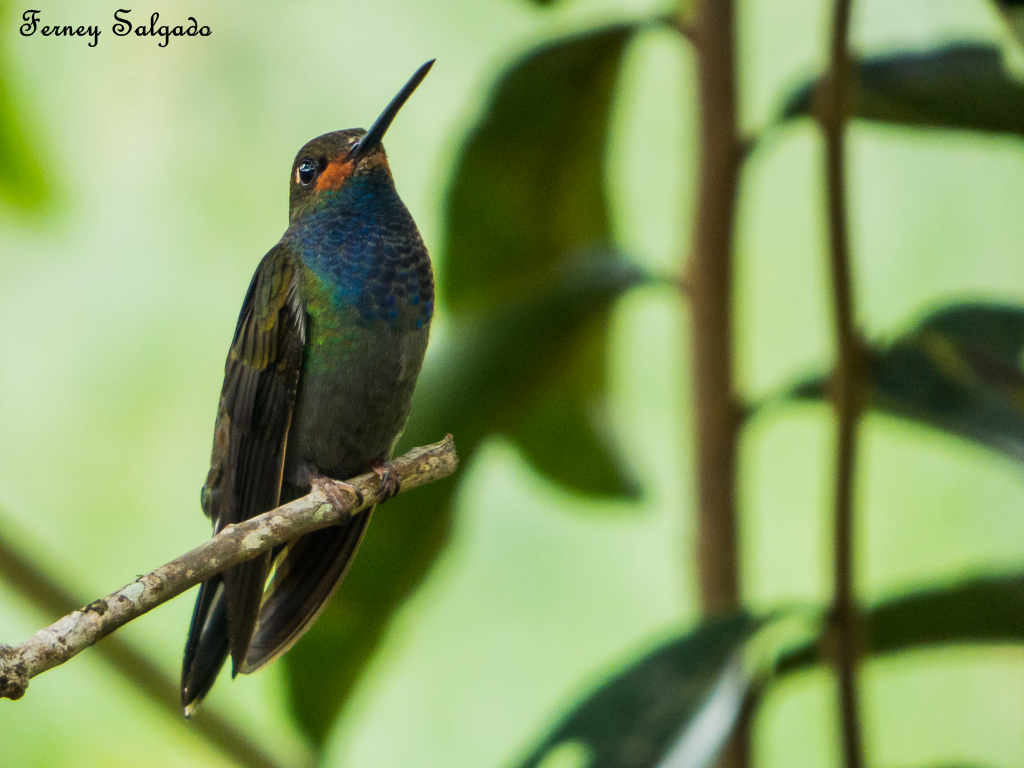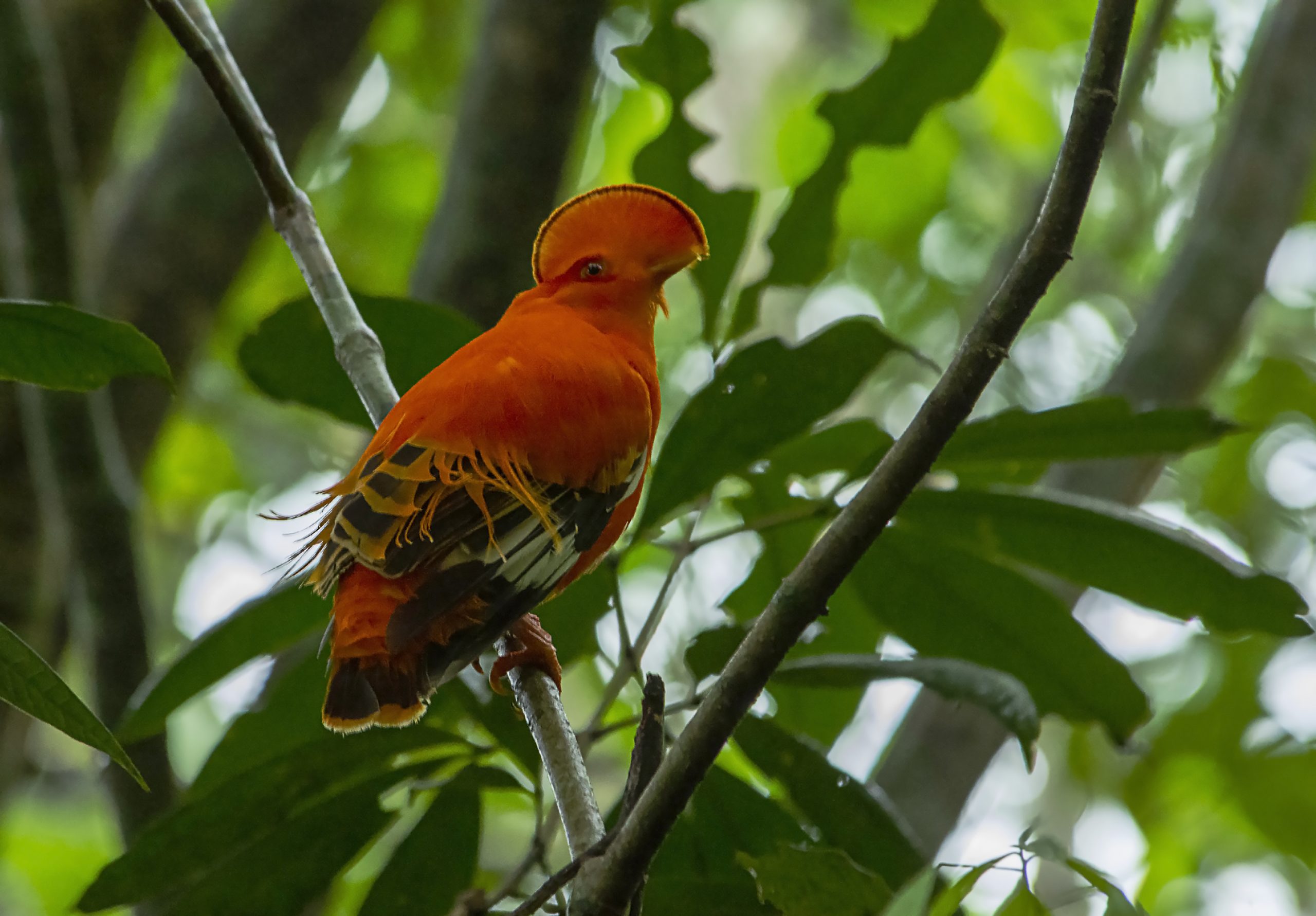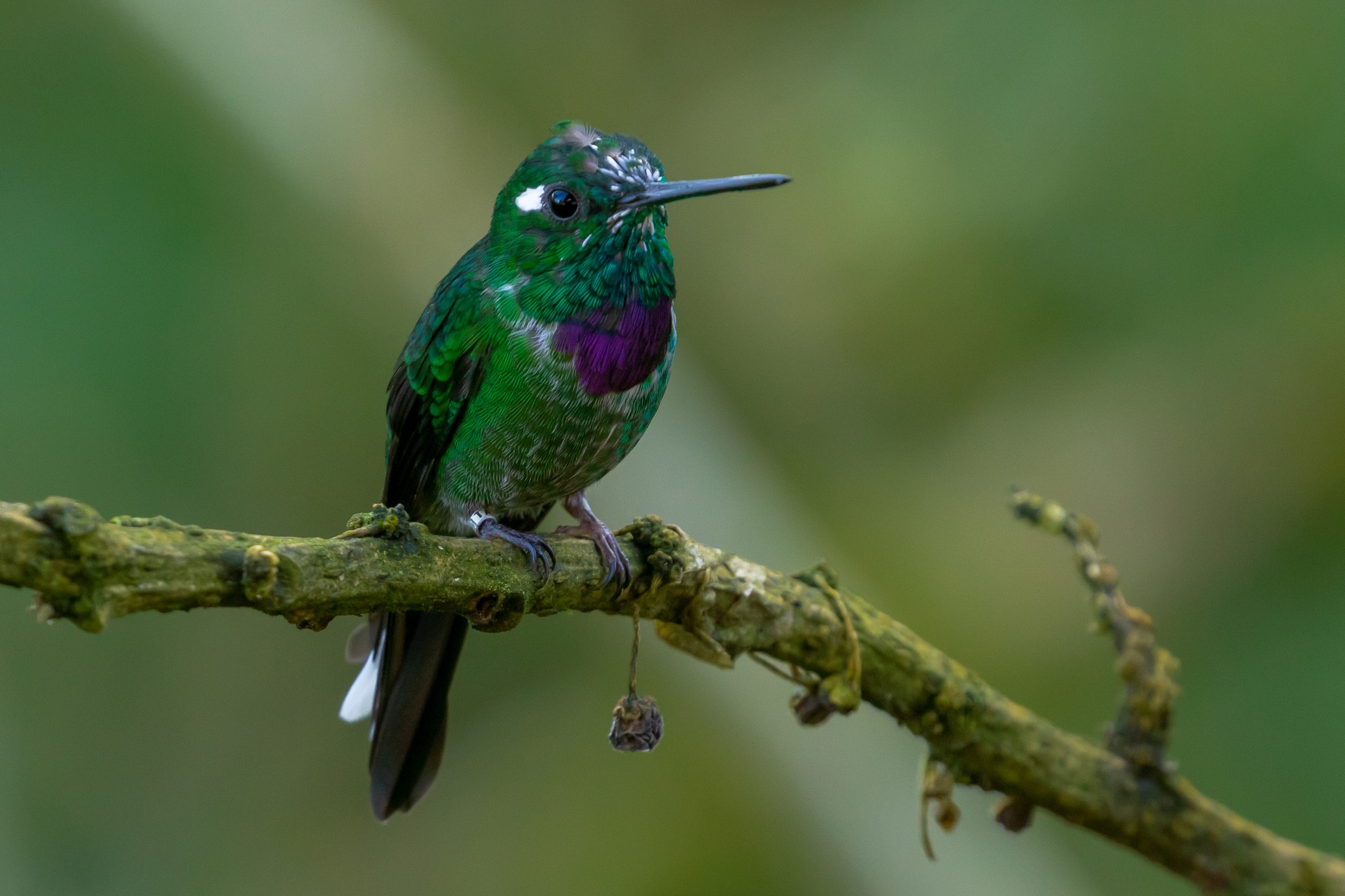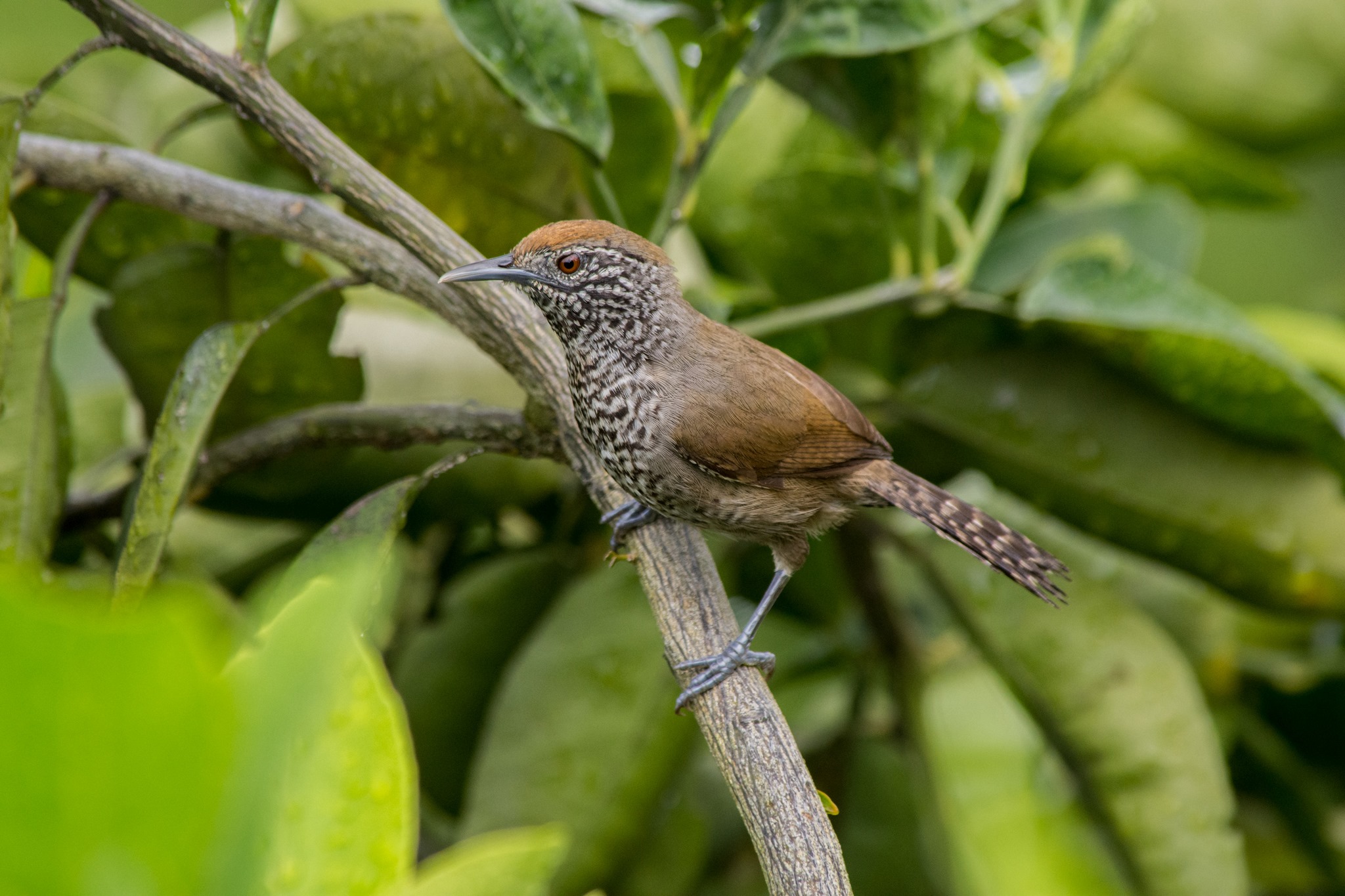It is the only species in the genus Urochroa. Its name means colorful tail and derives from the Greek roots oura = tail and khroa = color. The epithet bougueri was established in honor of the French mathematician, astronomer and hydrographer Pierre Bouguer.

The Guianan cock-of-the-rock (Rupicola rupicola) is a species of cotinga, a passerine bird from South America. It is about 30 centimetres (12 in) in length and weighs about 200 to 220 grams (7.1 to 7.8 oz). It is found in tropical rainforests, near its preferred habitat of rocky outcrops. The male’s plumage is bright orange and the males have a prominent half-moon crest. The females are brownish in colour, and are generally much duller coloured than the males. It is one of two species of the genus Rupicola, the other being the Andean cock-of-the-rock. The Guianan cock-of-the-rock lives across the forested region of northeastern South America
It is a very showy hummingbird because of its long iridescent violet tail. This species is only found in South America. Its name Aglaiocercus means splendorous tail and derives from the Greek roots aglaia = splendor and kerkos = tail. Its epithet coelestis comes from Latin and means heavenly.
The bay-headed tanager (Tangara gyrola) is a medium-sized passerine bird. This tanager is a resident breeder in Costa Rica, Panama, South America south to Ecuador, Bolivia and southern Brazil, and on Trinidad.
This species was until recently considered a subspecies of A. torquatus. Like other species of the genus, it is a bird with semi-terrestrial habits that remains solitary or in pairs. Its name Arremon derives from the Greek root arrhemon = silent and its epithet assimilis derives from Latin and means similar, indicating a similarity with another species.
The Santa Marta mountain tanager (Anisognathus melanogenys), also known as the black-cheeked mountain tanager, is a species of bird in the family Thraupidae. It is endemic to highland forest in the Santa Marta Mountains in Colombia. It is closely related to the widespread lacrimose mountain tanager, but the distributions of the two do not overlap.
The little blue heron (Egretta caerulea) is a small heron. It breeds in the Gulf states of the US, through Central America and the Caribbean south to Peru and Uruguay. It is a resident breeder in most of its range, but some northern breeders migrate to the southeastern US or beyond in winter. There is post-breeding dispersal to well north of the nesting range, as far as the Canada–US border.
It is a small hummingbird with a short beak, endemic to the biogeographic Choco. It has an iridescent purple pectoral crescent and conspicuous, mainly white inner rectrices. Its name Urosticte means spotted tail and derives from the Greek roots oura = tail and stiktos = spotted. The Benjamin Pitet was established in honor of the naturalist and merchant John Benjamin Leadbeater.
This family has some characteristics by which it stands, first, plumage coloration is more or less similar to the habitat in which it lives what serves to camouflage themselves, therefore prevail plumages coffee shades, reddish, gray, beige or black and white, and sometimes presents lists, barred or stained patterns; second, they are highlighted by the arrangement of the tail usually kept in a perpendicular and rigid position at the time they are perched or singing.
The keel-billed toucan (Ramphastos sulfuratus), also known as sulfur-breasted toucan or rainbow-billed toucan, is a colorful Latin American member of the toucan family. It is the national bird of Belize. The species is found in tropical jungles from southern Mexico to Colombia. It is an omnivorous forest bird that feeds on fruits, seeds, insects, invertebrates, lizards, snakes, and small birds and their eggs.












